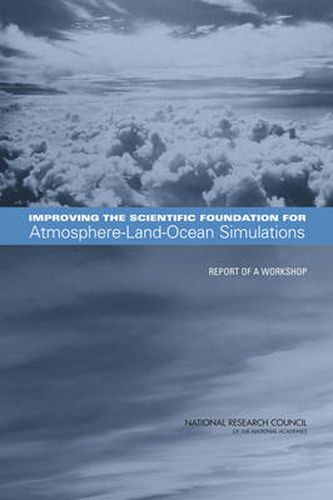Readings Newsletter
Become a Readings Member to make your shopping experience even easier.
Sign in or sign up for free!
You’re not far away from qualifying for FREE standard shipping within Australia
You’ve qualified for FREE standard shipping within Australia
The cart is loading…






The National Academies’ Board on Atmospheric Sciences and Climate (BASC) held a workshop to explore and evaluate current efforts to model physical processes of coupled atmosphere-land-ocean (A-L-O) models. Numerical models of the atmosphere and ocean are central to weather prediction, research, and education. Although great strides have been made over the past few decades in understanding the atmosphere and ocean, modeling capabilities, and numerical A-L-O simulations, some unresolved processes in the models do not adequately represent knowledge of the underlying physics. Moreover, there is evidence that further progress in numerical simulations is being impeded by the slow pace of improvement in the representation of key physical processes in the models and the fact that geophysical flow models are not receiving the attention needed to make these tools more useful and accurate. These models often are used to predict future events, so it is imperative that their underlying physical processes be represented as robustly as possible. During the workshop, the parameterization of physical processes in A-L-O models was addressed, including associated errors, testing, and efforts to improve the use of parameterizations. Participants also examined intellectual and scientific challenges in modeling and highlighted the idea that some of the key impediments to progress in representing physical processes are primarily cultural in nature.
$9.00 standard shipping within Australia
FREE standard shipping within Australia for orders over $100.00
Express & International shipping calculated at checkout
The National Academies’ Board on Atmospheric Sciences and Climate (BASC) held a workshop to explore and evaluate current efforts to model physical processes of coupled atmosphere-land-ocean (A-L-O) models. Numerical models of the atmosphere and ocean are central to weather prediction, research, and education. Although great strides have been made over the past few decades in understanding the atmosphere and ocean, modeling capabilities, and numerical A-L-O simulations, some unresolved processes in the models do not adequately represent knowledge of the underlying physics. Moreover, there is evidence that further progress in numerical simulations is being impeded by the slow pace of improvement in the representation of key physical processes in the models and the fact that geophysical flow models are not receiving the attention needed to make these tools more useful and accurate. These models often are used to predict future events, so it is imperative that their underlying physical processes be represented as robustly as possible. During the workshop, the parameterization of physical processes in A-L-O models was addressed, including associated errors, testing, and efforts to improve the use of parameterizations. Participants also examined intellectual and scientific challenges in modeling and highlighted the idea that some of the key impediments to progress in representing physical processes are primarily cultural in nature.